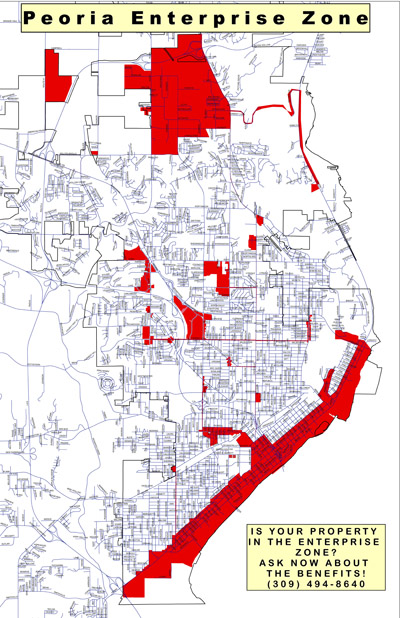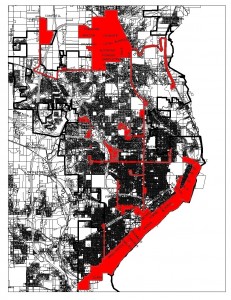Craig Hullinger has written a blog post about the necessity of providing incentives to rebuild a city’s downtown/older neighborhoods. Hullinger used to be the Economic Development Director for the City of Peoria until he retired in 2009. Since that time, the City has not hired a replacement; instead, Economic Development personnel report directly to the City Manager du jour. Hullinger is a very nice guy and has said some kind things about my blog; nevertheless, we have some disagreements on economic development theory.
“If an older city does not lead the redevelopment of its older central city, it will continue to decline,” Hullinger says. “[A] decision not to incent redevelopment is a decision to give up on your older areas…. [I]ncentives are required to rebuild downtown. Developers go where they are certain they can develop and get a great return. Redevelopment is much more costly and high risk then greenfield development. We have to equalize these costs through incentives if we want private sector renewal.”
What’s missing from this argument? It doesn’t specify what he means by “incentives.” An incentive is “any factor (financial or non-financial) that enables or motivates a particular course of action, or counts as a reason for preferring one choice to the alternatives.” If this is what we mean by “incentives,” then Hullinger and I do not disagree. I believe cities do need to invest in their older neighborhoods and to incentivize redevelopment where necessary.
The point of disagreement is over the kind of investments and incentives that should be made.
Let’s look at a specific example of the kind of incentives to which I object. Hullinger talks about equalizing costs of redevelopment with greenfield development. One of the tools to accomplish this is something called an “enterprise zone.” Its very purpose is to help cities revitalize their older central cities by providing sales tax breaks on building materials or a partial property tax abatement. The City of Peoria’s enterprise zone looks like this:
Notice where these incentives are predominantly going? Along the riverfront, and far north Peoria. Question: When the same incentives are given to greenfield sites as the central city, what effectiveness do they have? Answer: None. If anyone in the city can receive Enterprise Zone status, it’s no longer an incentive to locate in the central city. It loses all effectiveness, and becomes nothing more than developer welfare — a perk for the well-connected, like Firefly Energy, which you can see received EZ status on the map above (the thin red line that snakes down Detweiller Drive and Route 29 to the old Foster and Gallagher site). EZ status was even used as an annexation tool to keep a pizza place from moving out of the City — a pizza place that had already received an incentive from the City in the form of a business development loan.
When you eviscerate your economic development tools like this, it leads to an arms-race for more extravagant incentives to draw people to the central city. And that needlessly costs the taxpayers more money. We need to maximize the effectiveness of our economic development tools, and that means (among other things) using them where they’re needed, and not using them where they’re not needed.
And under no circumstances should we give a $9 million fee to a private developer to build a private hotel for his private profit. That’s not economic development. It’s pure, unadulterated developer welfare — welfare we can’t afford.


